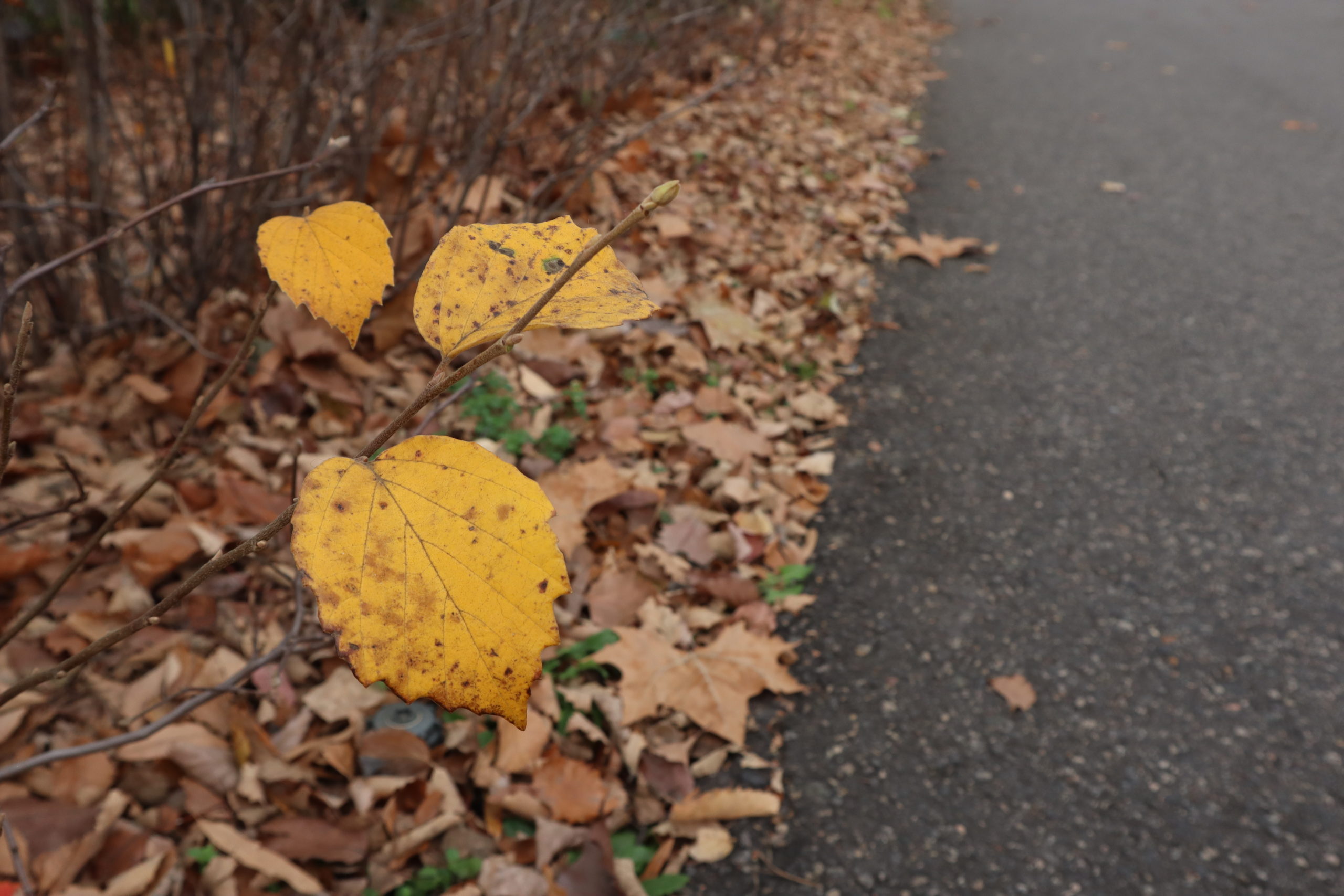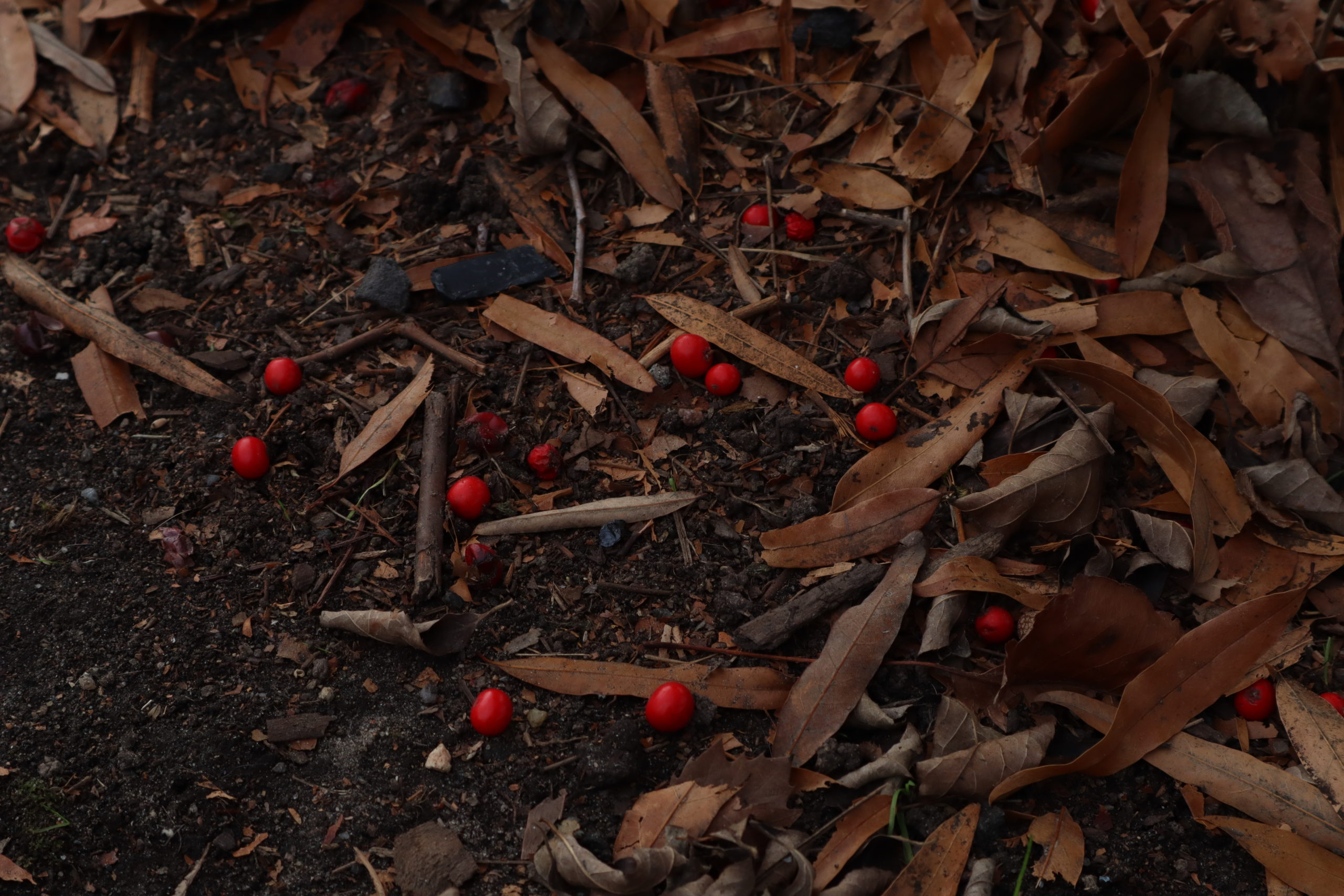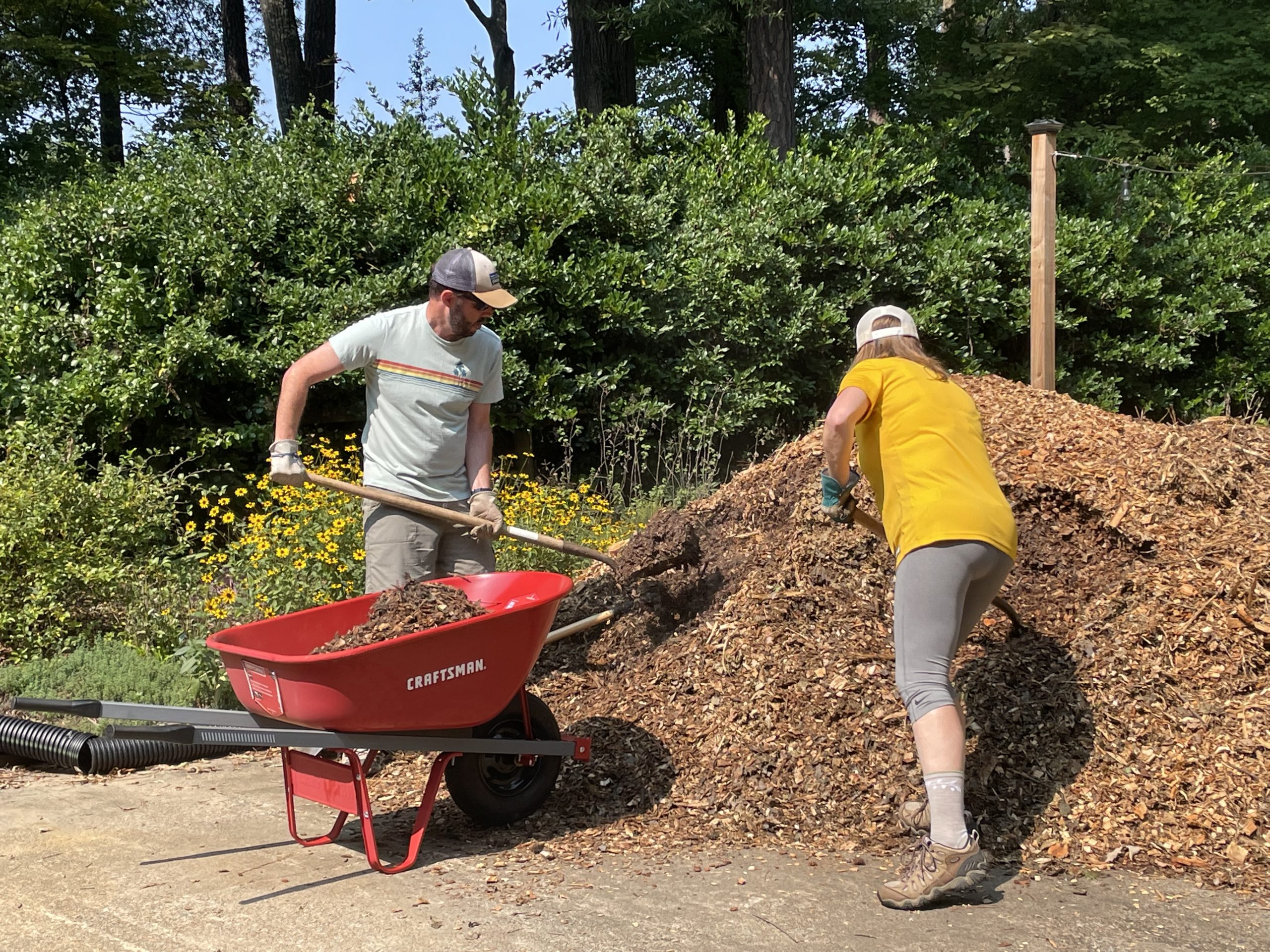Author: Anna G. Aquino
Capital Trees Demystifies Mulch Part I
Mulch is material (such as straw, leaves, or small pieces of wood) added to the soil surface that protects and replenishes this invaluable topsoil.
Let’s rethink living in a bark mulch world, using mulch only as a tool to encourage thriving ecosystems with abundant plants and animals.
Notice the color, fragrance, and diversity of textures of the mulch layer in healthy woods or fields. Leaves and stems fall to the ground and are decomposed by weather and soil organisms to create a mulch layer that protects the invaluable topsoil and is essential to a healthy ecosystem. The preferred aesthetic for landscape gardens is tidy and well-manicured, with defined lawn/bark mulch edges; this viewpoint may be changing, as the proposition of the renowned entomologist Doug Tallamy, “a messy garden is a healthy garden” continues to gain traction.(1) It is common for the caregiver to remove the organic plant material that falls on the bark mulch—leaves, twigs, and fruits—to create a pristine bark mulch layer. All of this, and it turns out that the bark mulch world that we live in is a bad idea. Please read on.
Don’t look for animal life or fungal hyphae or other beneficial living organisms in bark mulch. As we do at Capital Trees landscapes, why not imitate natural systems by leaving plant parts where they fall and let them decay and recycle as part of nature’s free mulch offering in this beautiful and perfect recycling system? Remember, “they are called leaves for a reason, you leave them!” Consider the insects, reptiles, amphibians, all of the biota that make their home in decomposing organic mulch in a natural setting and emulate natural ecosystems in the garden.

Organic mulch comes from living materials such as grasses, leaves, shredded bark, and straw.
Organic landscape mulches (inorganic mulches are those products that were never alive such as rocks and plastic sheeting) are key to a sustainable garden. Mulch protects topsoil, the digestive system of the earth, where all the action is, where roots and soil food web inhabitants do their incredible work. In contrast to organic soil amendments that are turned into the soil, mulch is installed on the surface, decomposing to contribute to the lively soil food web. There are several types of organic mulches to consider using, in our blog on Demystifying Mulch Part II we will catalog several mulch options. The surprise, the punchline, is that the best mulch can be free or the least expensive mulch on the menu at several of our local mulch yards. Not to blow your mind, but research shows it is also the best mulch at abating weeds, retaining moisture, slowly and sustainably releasing a constellation of nutrients, and resisting compaction, and promoting air movement to the soil. Is the suspense killing you?
Good organic garden mulch provides aesthetic value, it protects stems and bark from equipment damage, it spreads weight reducing compaction, prevents rain from compacting, eroding, and splashing soil on plants, and provides a home for beneficial soil flora and fauna. Mulch prevents moisture evaporation, cools soil during hot periods and insulates during cold, thus moderates freezing and thawing of the soil, increasing plant hardiness. Mulch builds soil organic matter along with increasing water-holding capacity, and reduces erosion and flooding, and is a key to weed management. Because of the beneficial microbes that accompany mulch, plants growing in mulch are more pest resistant and healthier than those that are not. As we know from our blog on soils, microbes are essential for foraging minerals, nutrients, and trace elements from great distances, bringing them to plants whose roots are at the soil surface, the microbes breaking them down for the plants in exchange for root exudates.(2)
Steps for a sustainable and thriving garden using mulch:
- Take soil samples from various locations to best gauge soil condition, percentage of organic matter will be provided on the soil test data sheet
- Goal is 5 to 7% organic matter, if in this range, mulch approximately 3 inches. Gas exchange is requisite for healthy soil, coarse-textured wood plus local leaves that resist compaction and allow for airflow are best
- If below 5 to 7% organic matter, spread approximately 2 inches of compost* then mulch approximately 3 inches, a “mulch sandwich”
- Soil test annually, and apply compost* if indicated, then mulch if needed
- A tip to installing compost in an established garden—spread the compost, then use a potato fork with its vertical tines to aerate and accelerate the compost leachate moving through the soil, then mulch if necessary. Remember: we are amending the soil, and it is the activities of the soil food web that feed the plants
- Careful – too much compost can make the garden too sweet, too rich, which is detrimental. Excessive floppy foliage with fewer flowers for instance, excessive weeds, and waterlogged soil with limited air and gas exchange
- Continue annual soil tests, applying compost and mulch until 5 to 7% organic matter is achieved, mulch again only when the mulch has decomposed to the point where topsoil is visible. Don’t over-mulch and don’t pile it on tree trunks or in shrub branching structures or on crowns of perennials. Mulching may be necessary annually, or every two or three years, it is site specific. Remember not to place on crowns of perennials, this is a quick way to kill them in winter when the wet mulch easily rots the crowns.

Interested in proper mulching to promote native bees and pollinators? It is important to leave some bare soil areas in gardens in which ground nesting insects make their homes. Visit the Xerces Society for Invertebrate Conservation for further information, search “pollinator habitats” specifically. (3,4,5) In order to support native pollinators, Capital Trees along with the City of Richmond’s Department of Parks, Recreation, & Community Facilities, the four Richmond clubs of the Garden Club of Virginia, have established the Richmond Bee City Working Committee to establish Richmond as Bee City USA. All are welcome to join; email [email protected] for more info. This initiative, if passed by City Council, would bring meaningful changes to how Richmond manages its landscapes in order to promote healthy pollinators. Look for future posts on creating pollinator friendly public landscapes.
Resources:
*Compost is decayed plant and animal organic matter. The City of Richmond’s Department of Parks, Recreation, and Community Facilities has just launched a citywide composting program. Look for a future post on composting.

